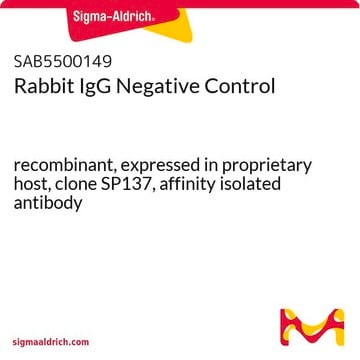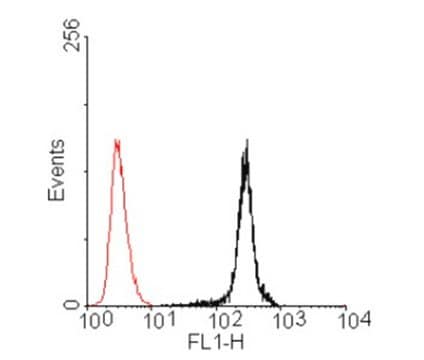MABC1128
Anti-FAM83B Antibody, clone 7D11
clone 7D11, from mouse
Synonyme(s) :
Protein FAM83B, Family with Sequence Similarity 83, member B
About This Item
Produits recommandés
Source biologique
mouse
Forme d'anticorps
purified immunoglobulin
Type de produit anticorps
primary antibodies
Clone
7D11, monoclonal
Espèces réactives
human
Conditionnement
antibody small pack of 25 μg
Technique(s)
immunocytochemistry: suitable
immunoprecipitation (IP): suitable
western blot: suitable
Isotype
IgG2bκ
Numéro d'accès NCBI
Numéro d'accès UniProt
Modification post-traductionnelle de la cible
unmodified
Informations sur le gène
human ... FAM83B(222584)
Description générale
Spécificité
Immunogène
Application
Signaling
Immunocytochemistry Analysis: A representative lot detected FAM83B in Immunocytochemistry applications (Cipriano, R., et. al. (2012). J Clin Incest. 122(9):3197-210).
Immunoprecipitation Analysis: A representative lot detected FAM83B in Immunoprecipitation applications (Cipriano, R., et. al. (2014). Oncogene. 33(25):3298-306).
Qualité
Western Blotting Analysis: 1 µg/mL of this antibody detected FAM83B in HEK293T cells transfected with SN3-hFAM83B-HA.
Description de la cible
Forme physique
Stockage et stabilité
Autres remarques
Clause de non-responsabilité
Not finding the right product?
Try our Outil de sélection de produits.
Certificats d'analyse (COA)
Recherchez un Certificats d'analyse (COA) en saisissant le numéro de lot du produit. Les numéros de lot figurent sur l'étiquette du produit après les mots "Lot" ou "Batch".
Déjà en possession de ce produit ?
Retrouvez la documentation relative aux produits que vous avez récemment achetés dans la Bibliothèque de documents.
Notre équipe de scientifiques dispose d'une expérience dans tous les secteurs de la recherche, notamment en sciences de la vie, science des matériaux, synthèse chimique, chromatographie, analyse et dans de nombreux autres domaines..
Contacter notre Service technique








